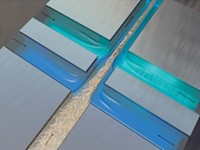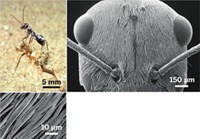Advertisement
Grab your lab coat. Let's get started
Welcome!
Welcome!
Create an account below to get 6 C&EN articles per month, receive newsletters and more - all free.
It seems this is your first time logging in online. Please enter the following information to continue.
As an ACS member you automatically get access to this site. All we need is few more details to create your reading experience.
Not you? Sign in with a different account.
Not you? Sign in with a different account.
ERROR 1
ERROR 1
ERROR 2
ERROR 2
ERROR 2
ERROR 2
ERROR 2
Password and Confirm password must match.
If you have an ACS member number, please enter it here so we can link this account to your membership. (optional)
ERROR 2
ACS values your privacy. By submitting your information, you are gaining access to C&EN and subscribing to our weekly newsletter. We use the information you provide to make your reading experience better, and we will never sell your data to third party members.
Materials
The Secret Of Ivy's Sticking Power
Creeping vine secretes adhesive nanoparticles
by Bethany Halford
March 26, 2008
In another example of nature making the most of nanotechnology, scientists have discovered that ivy uses organic nanoparticles to cling to and climb up virtually any surface (Nano Lett., DOI: 10.1021/nl0725704).
The small and flexible nanoparticles fit easily into even the tiniest crevices, thereby allowing ivy to generate enough force for climbing and giving it an incredible affixing power, which anyone who has ever tried to remove the resilient vine can attest to. According to the researchers, engineers could exploit this novel adhesive mechanism for a range of engineering applications, including the development of climbing robots.
Mingjun Zhang, the University of Tennessee, Knoxville, engineering professor who spearheaded the research, got the idea to study ivy while watching his son play outside one afternoon. He noticed how the plant had woven its way around a nearby fence and wondered what the source of its climbing prowess was.
Zhang wasn't able to find much in the literature to satisfy his curiosity, aside from an 1876 report from Charles Darwin noting that ivy rootlets secrete a yellowish matter while climbing a surface. To get an idea what makes this material stick, Zhang's lab coaxed ivy into growing onto silicon and mica surfaces and then studied the secretions with optical and atomic force microscopy.
"We were very surprised to see nanoparticles," Zhang says of the mass of highly uniform particles roughly 70 nm in diameter that the secretions contained. Analysis with high-performance liquid chromatography revealed that the nanoparticles are made up of a complex mix of organic compounds. Zhang's team was able to determine the formulas for the 19 most prevalent compounds, although they have not yet determined their structures.
"It is fascinating how plants make use of nanotechnology for their livelihood," comments Jeffrey M. Karp, a biomaterials and nanotechnology expert at Harvard Medical School. "Clearly this work provides an opportunity for inspiration that can be applied to solving human problems through biomimetic approaches. Although it is still early, harnessing nanoparticles capable of similar levels of adhesion through hydrogen-bonding mechanisms could be useful to design new industrial and medical adhesives."






Join the conversation
Contact the reporter
Submit a Letter to the Editor for publication
Engage with us on Twitter